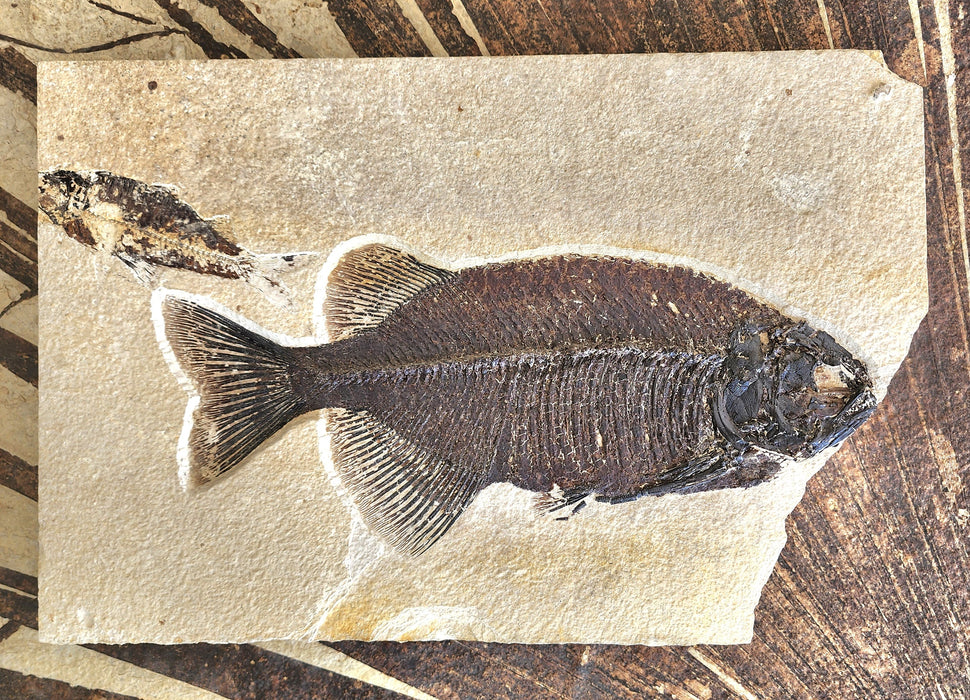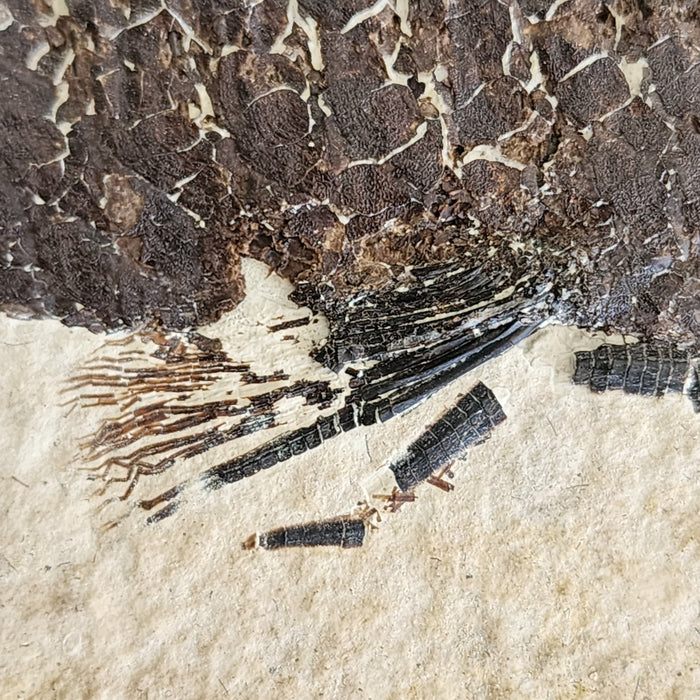
Phareodus testis and Knightia eocaena | Zero Restoration | Green River Formation
Living members of the Osteoglossidae family:
- include 10 modern species
- live exclusively in tropical freshwaters
- found in South America, Africa, Asia, and Australia
- mouth-brooders (parents hold eggs and hatchlings in their mouths)
- adult specimens usually found alone, but juveniles known from mass mortalities
- indicates that Phareodus schooled as a juvenile and became solitary as an adult
- often preserved with smaller fish in their jaws and stomach, indicating they were predators
- rearward oriented fins on back and underside, adaptation for speed
- large, sharp teeth
- max known size of P. encaustus: 30 inches
- max known size of P. testis: 20 inches
Knightia is an extinct genus of clupeid bony fish that lived in the freshwater lakes and rivers of North America and Asia during the Eocene epoch. The genus was erected by David Starr Jordan in 1907, in honor of the late University of Wyoming professor Wilbur Clinton Knight, "an indefatigable student of the paleontology of the Rocky Mountains." It is the official state fossil of Wyoming, and the most commonly excavated fossil fish in the world.
Knightia belongs to the same taxonomic family as herring and sardines, and resembled the former closely enough that both Knightia alta and Knightia eocaena were originally described as species of true herring in the genus Clupea.
As with modern-day clupeids, Knightia spp. likely fed on algae and diatoms, as well as insects and occasionally smaller fish.
Anatomy
In Knightia fish, rows of dorsal and ventral scutes run from the back of the head to the medial fins. They had heavy scales and small conical teeth. Their size varied by species: Knightia eocaena was the longest, growing up to 25 cm (10 in), though most specimens are no larger than 15 cm. K. alta was shorter and relatively wider, with specimens averaging between 6 and 10 cm.






